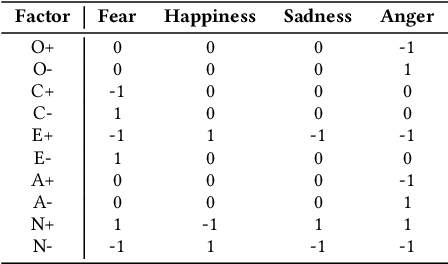How much do you perceive this? An analysis on perceptions of geometric features, personalities and emotions in virtual humans
Paper and Code
Apr 24, 2019



This work aims to evaluate people's perception regarding geometric features, personalities and emotions characteristics in virtual humans. For this, we use as a basis, a dataset containing the tracking files of pedestrians captured from spontaneous videos and visualized them as identical virtual humans. The goal is to focus on their behavior and not being distracted by other features. In addition to tracking files containing their positions, the dataset also contains pedestrian emotions and personalities detected using Computer Vision and Pattern Recognition techniques. We proceed with our analysis in order to answer the question if subjects can perceive geometric features as distances/speeds as well as emotions and personalities in video sequences when pedestrians are represented by virtual humans. Regarding the participants, an amount of 73 people volunteered for the experiment. The analysis was divided in two parts: i) evaluation on perception of geometric characteristics, such as density, angular variation, distances and speeds, and ii) evaluation on personality and emotion perceptions. Results indicate that, even without explaining to the participants the concepts of each personality or emotion and how they were calculated (considering geometric characteristics), in most of the cases, participants perceived the personality and emotion expressed by the virtual agents, in accordance with the available ground truth.
 Add to Chrome
Add to Chrome Add to Firefox
Add to Firefox Add to Edge
Add to Edge